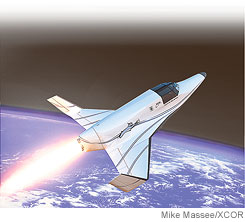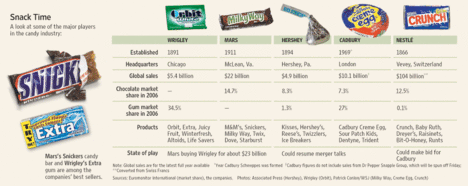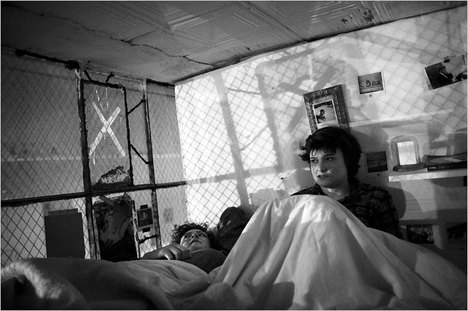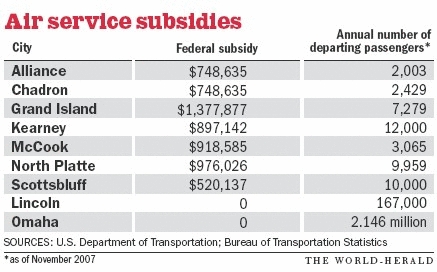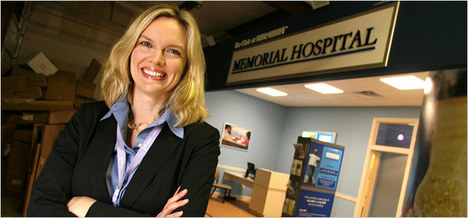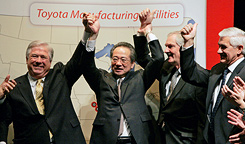 “Haley Barbour, left, with Toyota officials in February 2007 moments after announcing Toyota Motor Corp. will build a $1.3 billion assembly plant in northeast Mississippi.” Source of caption and photo: online version of the WSJ commentary quoted and cited below.
“Haley Barbour, left, with Toyota officials in February 2007 moments after announcing Toyota Motor Corp. will build a $1.3 billion assembly plant in northeast Mississippi.” Source of caption and photo: online version of the WSJ commentary quoted and cited below.
(p. A9) Jackson, Miss. Shortly after winning election in 2003 by running on a tort-reform platform, Mr. Barbour stitched together a coalition of doctors, business groups, taxpayers and even unions to roll back the trial lawyer lobby.
“It was not just a battle,” recalls Charlie Ross, the Senate sponsor of the reform bill, “it was a five-year war.” The law that eventually passed was every trial lawyers’ worst nightmare. It capped awards for noneconomic damages, and prevented the popular practice whereby a plaintiff attorney seeking to bring a class-action shops around for a court where he’ll be likely to get a favorable ruling or judgment.
Almost overnight, the flow of lawsuits began to dry up and businesses started to trickle in. Federal Express invested $1 billion in a new facility in the state. Toyota chose Mississippi over about a dozen other states for a new $1.2 billion, 2,000-worker auto plant. The auto maker has stipulated that the company would pull up stakes if the tort reforms were overturned by the legislature or activist judges.
That hasn’t happened. About 60,000 new jobs have arrived in four years – not a small number in a workforce of about 1.3 million – and a sharp improvement from the 30,000 jobs lost in the four years before Mr. Barbour took office. Since the law took effect, the number of medical malpractice lawsuits has fallen by nearly 90%, which in turn has cut malpractice insurance costs by 30% to 45%, depending on the county.
Another encouraging sign: Fewer Mississippians are heading to law school and more are looking at business school as the best way to get rich. Many in the younger generation are pursuing a career path that will make them wealth creators, not wealth redistributors.
. . .
Thanks to Mr. Barbour, the state’s unemployment rate is down to about 6% from nearly 9%. Last year, Mississippi’s per capita income growth was 6.7%, third highest of the 50 states and well above the national average of 5.2%. Mississippi tort reform is making the poor richer, and the rich lawyers less fabulously rich. Now that’s a good way to close the income gap.
For the full commentary, see:
STEPHEN MOORE. “CROSS COUNTRY; Mississippi’s Tort Reform Triumph.” The Wall Street Journal (Sat., May 10, 2008): A9.
(Note: ellipsis added.)


